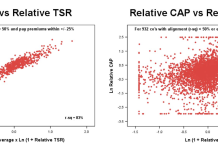Jocelyn Blériot – Executive Lead, International Institutions & Governments, Ellen MacArthur Foundation, shares his thoughts on how fostering healthy economic development while addressing the challenges faced on the environmental front involves co-creation mechanisms between the private and the public sector
Redefining growth in the 21st century entails a systemic, multi-stakeholder, all-encompassing shift: from the industrial revolution-inherited, linear, extractive model of take, make and waste, to one that shapes beneficial solutions. To get there, incremental improvements or simple tweaks to the existing model will not suffice. The economy as we know it relies first and foremost on the transformation of resources which are mostly finite. Better recycling or efficiency measures can only delay the inevitable – not prevent it.
Having lifted billions out of poverty and made material comfort a legitimate aspiration for all, the industrial engine is seeing obstacles on its horizon. The combination of resource scarcity and severe negative impacts makes it unreasonable to think we can carry on extracting, consuming and throwing away.
And while we might have come to realise that there actually is no ‘away’, we still have a lot of work to do to understand the interconnectedness of the system. Consider for instance that, according to the International Resource Panel’s latest report Global Resources Outlook 2019, 90% of biodiversity loss and water stress are caused by resource extraction and processing. (1) That’s before we even start to take into account the use-phase of our products, buildings and infrastructure. The way we make and use things lies at the heart of the issue, with cascading impacts that are both physical and societal.
Looking at the vexing problem of GHG emissions, switching to renewable energy and improving efficiency are vital measures, but this alone is not enough to fight the climate crisis – as it only tackles 55% of global greenhouse gas emissions. To achieve UN goals, we urgently need to consider the remaining 45% of emissions, which are generated by the production of the goods we use every day – everything from food to cars and buildings.
Circular economy
A circular economy can help to achieve this by designing out waste, keeping materials in use and regenerating natural systems. Analysis shows that applying circular economy strategies in five key areas (cement, steel, aluminium, plastics and food) can eliminate almost half of the emissions from these sectors by 2050, which amounts to a reduction of 9.3 billion tonnes of CO2e – equivalent to eliminating current emissions from all forms of transport globally. (2)
The transformation is achieved by, for example, substantially increasing the use of buildings and vehicles (notably through digitally-enabled sharing models), thereby reducing the need for additional assets and, thus, avoiding production-derived emissions. Heavy industry might be an obvious starting point due to its inherent material and energy intensity, but circularity can also be harnessed to re-invent the food system, to attain a regenerative model based on the optimisation of nutrient loops. It makes business sense, through the valorisation of agricultural by-products for high-value molecular extraction, energy production and dramatically reduced needs for expensive and soil-damaging chemical fertilisers. Furthermore, a large positive effect is achieved by using regenerative agriculture practices, which serve to sequester carbon in the soil.
With a significant body of research highlighting the circular economy’s credibility, one could potentially argue that there is ‘proof of concept’, so what is required now is proper scale. Efforts remain to be made across a variety of fields such as materials science, education, design and infrastructure investment, but the early signs of a transition are firmly in place, on the back of strong private and public sector involvement.
To find out more about how the circular economy can help tackle climate change, a copy of the report Completing the Picture: How the Circular Economy Tackles Climate Change, which reveals the need for a fundamental shift in the global approach to cutting emissions can be accessed here.
References
1. https://www.resourcepanel.org/reports/global-resources-outlook
2. https://www.ellenmacarthurfoundation.org/news/climate-change-paper-released











